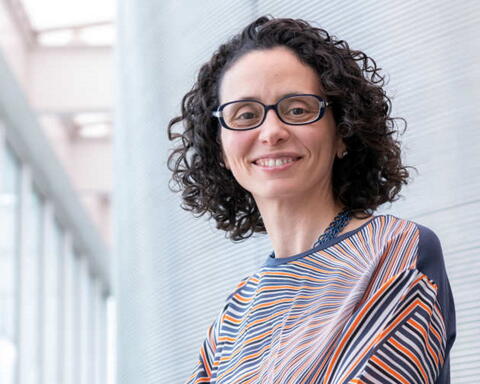Multinationals are rich in R&D talent, but how can leaders make the most of it?
Attracting the highest quality R&D talent is no small feat, but ensuring you have an environment where innovation can flourish is tougher still.
R&D workers need autonomy to explore novel ideas, while business leaders want managerial oversight and control to ensure these ideas are of benefit to the company. This is a difficult balance to strike and getting it wrong can damage a corporation’s chances of nurturing innovation.
But this isn’t the only way organisations can falter and end up negatively impacting their chances at an R&D breakthrough; the career progression of R&D managers is also crucial when it comes to boosting innovation.
Imperial College Business School’s Professor Paola Criscuolo and Dr Anne ter Wal teamed up with a FTSE 500 multinational corporation to explore how to achieve a supportive environment for R&D. The findings they drew from interviews with employees and surveys have implications for how the wider business community can drive up innovation, and with it, employee satisfaction and company profitability.
The benefits of bootlegging
When innovators feel their freedom to explore new ideas is being limited by their organisation, they often resort to “bootlegging”: projects that are worked on in secret during the early stages of the innovation process. R&D specialists carry out these projects for several reasons: it gives them the chance to demonstrate an idea is feasible before exposing it managerial criticism, as well as circumvent inflexible innovation processes and a lack of creative freedom within an organisation.
Through their research – the first to consider the value of bootlegging when looking at innovation outcomes – Professor Criscuolo and Dr ter Wal found that technologists were on average dedicating 14 per cent of their time to these under-the-radar projects. The FTSE 500 multinational, which spends around $2 billion annually on R&D investment, was previously unaware of this.
Even more significantly, the research provided evidence that these bootlegging activities helped with the development of breakthrough ideas, with employees who engaged in more bootlegging rated as more innovative by the organisation.
Research by Professor Criscuolo and Dr ter Wal showed that mobility could potentially undermine the ability of managers to be effective innovation leaders
Armed with this information, the multinational introduced seed funding for early-stage, bottom-up innovation, allowing researchers much-needed autonomy, while retaining some degree of control and accountability to ensure projects were aligned the company objectives.
As a result, business units had multiple examples of seed fund-initiated research, which led directly to new product innovation. This became an important vehicle for leveraging bottom-up ideas from technologists for the development of innovation.
But it wasn’t only the way ideas were developed that interested the company, leaders were also concerned that innovation was being limited by the way R&D managers transferred between divisions.
Innovation leaders
Traditionally, managers were being encouraged to move frequently between business divisions in the belief this would encourage intra-company learning.
But research by Professor Criscuolo and Dr ter Wal showed that mobility could potentially undermine the ability of managers to be effective innovation leaders. They found that managers with more focused career paths outperformed managers with less focused careers. Specifically, those with more experience in their current business division and who had worked in other divisions using related technology received higher performance ratings. Meanwhile, too much variety in a manager’s career undermined their ability to attend to division-specific demands in pursuit of innovation.
Using Professor Criscuolo and Dr ter Wal’s research as a jumping off point, the multinational introduced new policy guidance on intra-firm mobility, decreasing the frequency of R&D manager transfers across unrelated business areas.
The multinational introduced seed funding... allowing researchers much-needed autonomy
Their evidence on organisational design changed the company’s approach to career planning, decreasing the number of moves made by managers across unrelated divisions to give them more and deeper technical expertise to be effective innovation leaders. The result Is that R&D managers have higher levels of technical mastery and are more effective in their roles.
Research also found that managers, scientists and engineers in R&D can work together more effectively if they engage in dual networking: reaching out to the same groups in the organisation – but different individuals – for advice and support.
This partnership between Professor Criscuolo and Dr ter Wal and the FTSE 500 firm helped the company focus on how it can best support technologists and managers to do what they set out to achieve when they joined its worldwide R&D operations.

